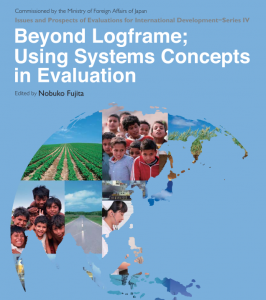The New York Times columnist David Brooks nicely captures the problem that Carol Weiss identified several decades ago… data doesn’t speak authoritatively, nor should it. In evaluation and in decision making we take into account loads of data, available to us in greater amounts and more sophisticated ways, but it still is never enough on its own.
Brooks highlights the limitations of what he calls “big data.”
Data struggles with the social. Your brain is pretty bad at math (quick, what’s the square root of 437), but it’s excellent at social cognition. People are really good at mirroring each other’s emotional states, at detecting uncooperative behavior and at assigning value to things through emotion.
Computer-driven data analysis, on the other hand, excels at measuring the quantity of social interactions but not the quality. Network scientists can map your interactions with the six co-workers you see during 76 percent of your days, but they can’t capture your devotion to the childhood friends you see twice a year, let alone Dante’s love for Beatrice, whom he met twice.
Therefore, when making decisions about social relationships, it’s foolish to swap the amazing machine in your skull for the crude machine on your desk.
Data struggles with context. Human decisions are not discrete events. They are embedded in sequences and contexts. The human brain has evolved to account for this reality. People are really good at telling stories that weave together multiple causes and multiple contexts. Data analysis is pretty bad at narrative and emergent thinking, and it cannot match the explanatory suppleness of even a mediocre novel.
Data creates bigger haystacks. This is a point Nassim Taleb, the author of “Antifragile,” has made. As we acquire more data, we have the ability to find many, many more statistically significant correlations. Most of these correlations are spurious and deceive us when we’re trying to understand a situation. Falsity grows exponentially the more data we collect. The haystack gets bigger, but the needle we are looking for is still buried deep inside.
One of the features of the era of big data is the number of “significant” findings that don’t replicate the expansion, as Nate Silver would say, of noise to signal.
Big data has trouble with big problems. If you are trying to figure out which e-mail produces the most campaign contributions, you can do a randomized control experiment. But let’s say you are trying to stimulate an economy in a recession. You don’t have an alternate society to use as a control group. For example, we’ve had huge debates over the best economic stimulus, with mountains of data, and as far as I know not a single major player in this debate has been persuaded by data to switch sides.
Data favors memes over masterpieces. Data analysis can detect when large numbers of people take an instant liking to some cultural product. But many important (and profitable) products are hated initially because they are unfamiliar.
Data obscures values. I recently saw an academic book with the excellent title, “ ‘Raw Data’ Is an Oxymoron.” One of the points was that data is never raw; it’s always structured according to somebody’s predispositions and values. The end result looks disinterested, but, in reality, there are value choices all the way through, from construction to interpretation.
 Follow
Follow



